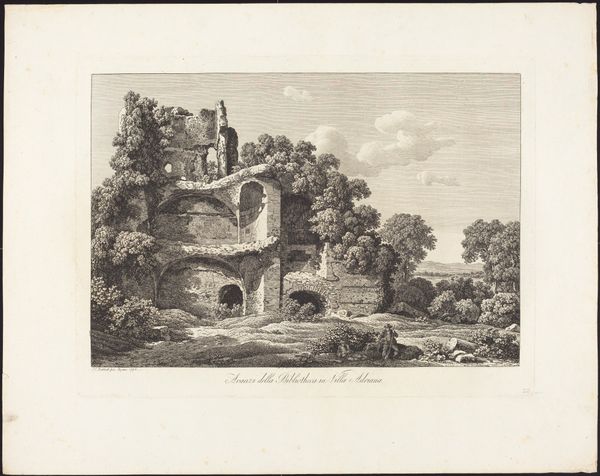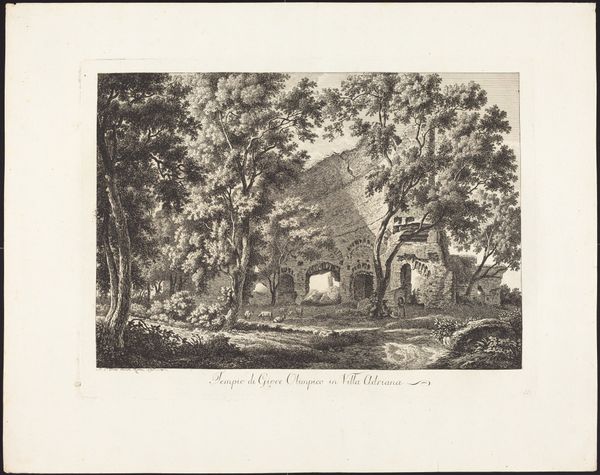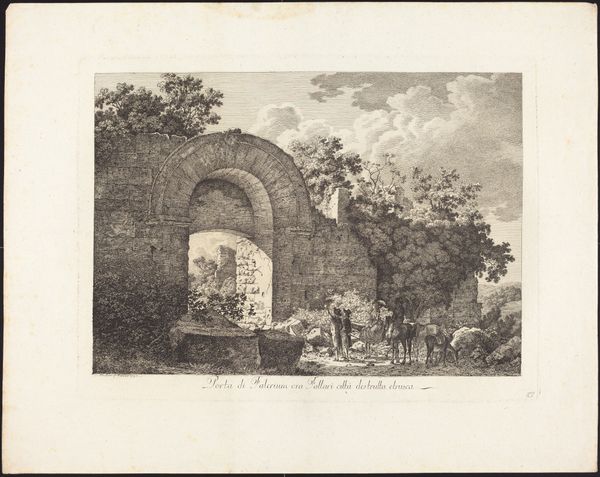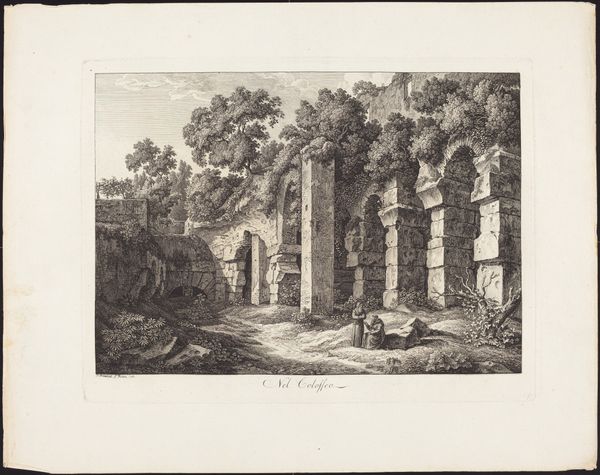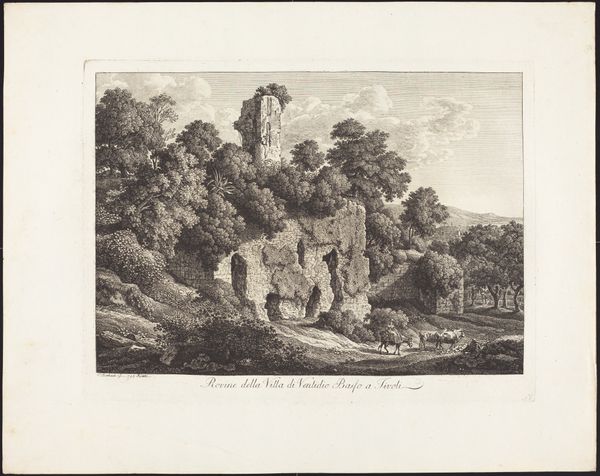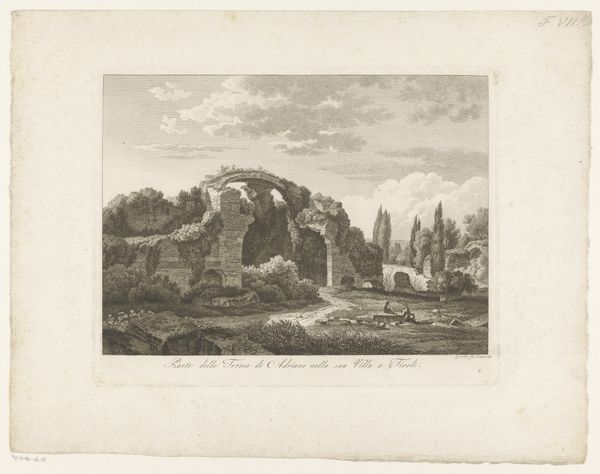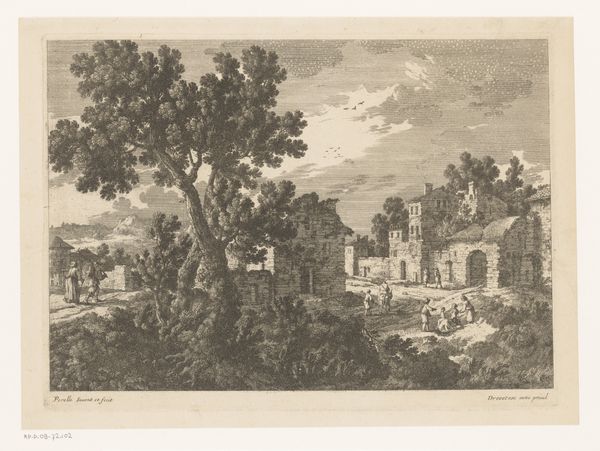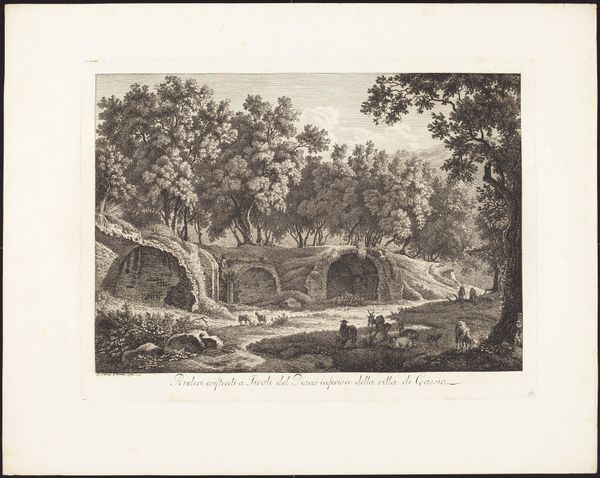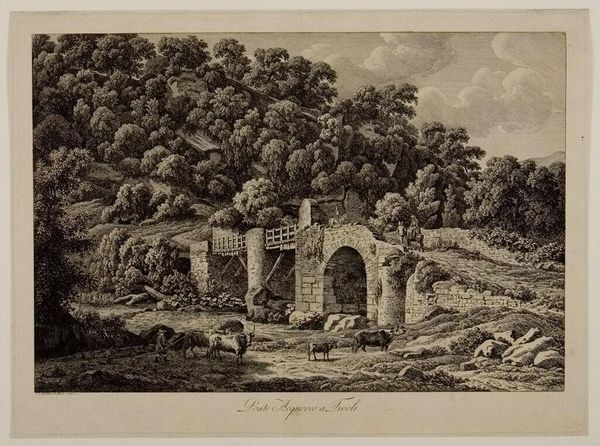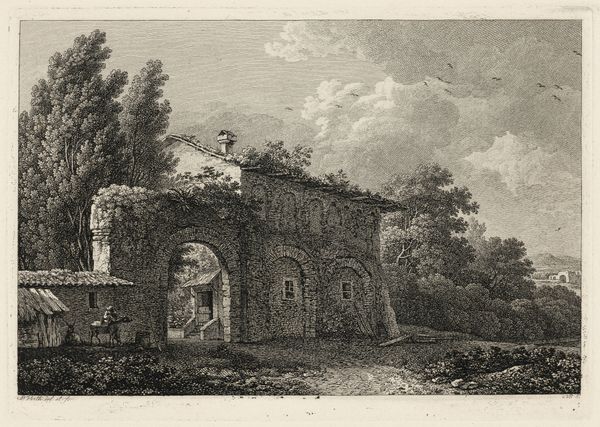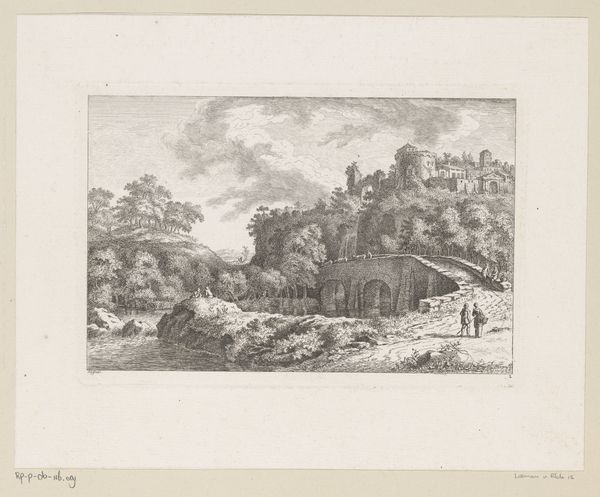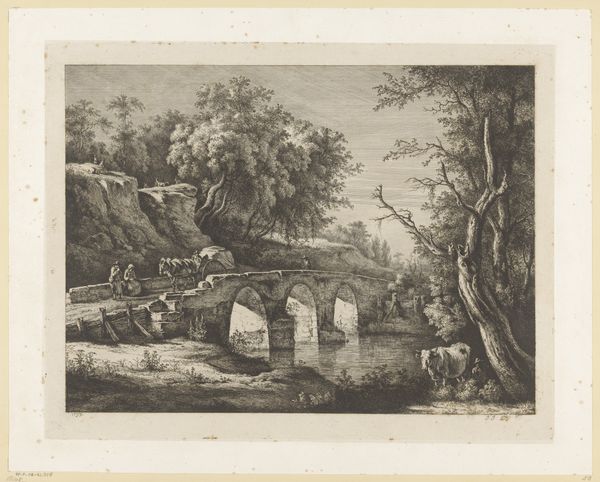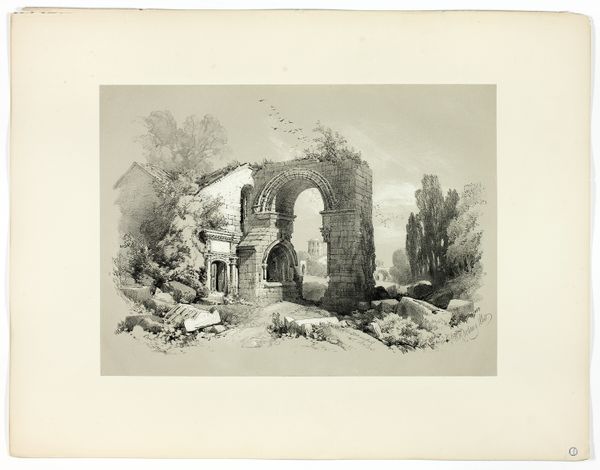
print, etching, engraving
# print
#
etching
#
landscape
#
romanticism
#
history-painting
#
engraving
Dimensions: plate: 27.9 x 38 cm (11 x 14 15/16 in.) overall: 39.2 x 49.2 cm (15 7/16 x 19 3/8 in.)
Copyright: National Gallery of Art: CC0 1.0
Editor: We're looking at "Ponte Acquoreo a Tivoli," an etching by Johann Christian Reinhart, from 1792. The bridge itself feels so monumental, and the way the lines are etched makes it appear sturdy. What do you see in this piece, looking at it through your perspective? Curator: I'm immediately drawn to the labor embedded in this landscape. The print medium itself is key; the processes of etching and engraving are time-intensive and demand specialized skills. This piece presents not just a picturesque scene, but also a testament to human intervention on the environment, how the stone was sourced and how much labor went into constructing the bridge. It's as much about production as it is about the vista. What about the relationship between the man-made bridge and natural surrounding elements? Editor: I noticed that too! The bridge seems integrated with the landscape. It's like nature is slowly reclaiming it, plants are growing out of it and animals are casually around the bridge, suggesting nature's resilience and, maybe, civilization’s potential decline. How does that dynamic speak to its time? Curator: Exactly. The Romantic era was obsessed with ruins, and not just for their aesthetic appeal. Ruins embodied a dialogue about labor, endurance, and the cyclical nature of history. They were symbols of vanished power, but their very existence, even in decay, highlights the enduring qualities of materials like stone. Note, though, the small figures grazing animals! This is a clear nod to labor required to shape and consume the resources within this vista. It's the constant act of making that this print reminds us of. Does seeing the art-making process this way affect your initial sense of the scene's monumentality? Editor: Absolutely! I originally saw grand, sweeping romance but I appreciate noticing how the making, consuming and the historical backdrop shaped the work and affects how we should interpret it today. Curator: That interplay is precisely the point. Material realities aren't separate from artistic and cultural expression; they are fundamental to it.
Comments
No comments
Be the first to comment and join the conversation on the ultimate creative platform.
